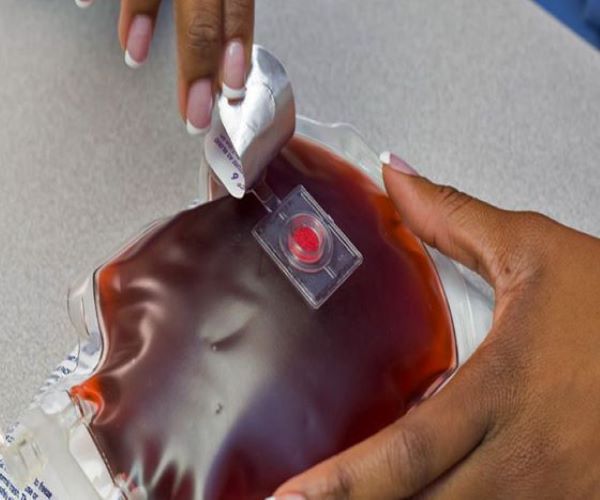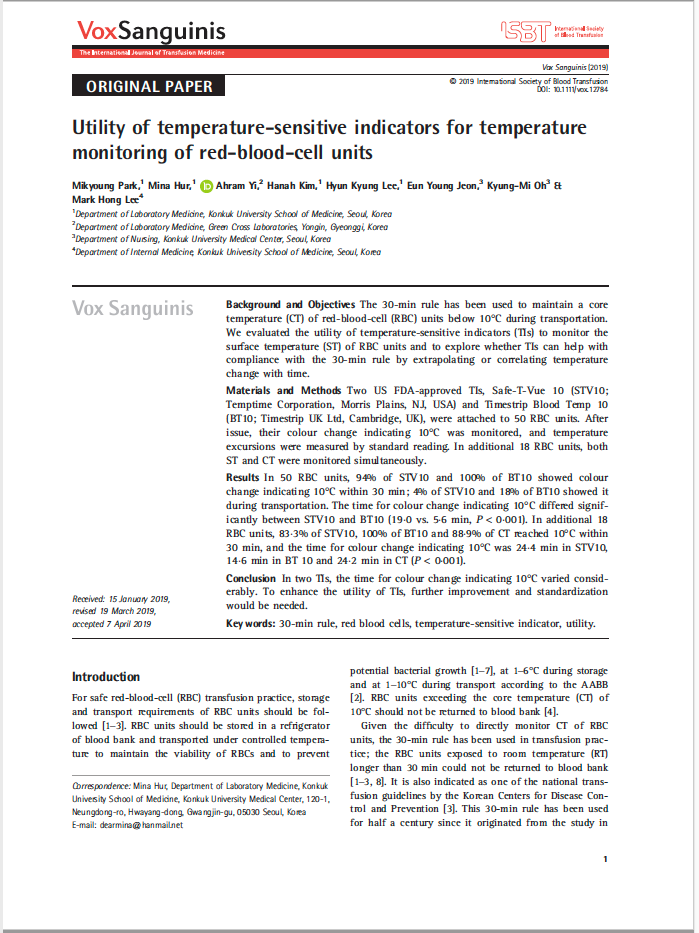

New Journal Article Documents the Performance of Two Blood Temperature Indicators in Real Hospital Setting
Many blood banks trust and use temperature indicators that are manufactured to monitor the true core temperature of your blood products while they are outside of the blood bank's control.
What if you learned that the indicator does not perform in accordance with the intended guidelines?
Download this new report to see how the real-life performance of blood temperature indicators compare.
Would you have doubts that you may be inappropriately discarding valuable blood product due to a performance discrepancy?
A new article entitled “Utility of temperature-sensitive indicators for temperature monitoring of red blood cell units,” just published in Vox Sanguinis, the International Journal of Transfusion Medicine, could clear some of your doubts while answering important questions about blood temperature indicator performance.
The study documents the performance testing of two temperature indicators, Safe-T-Vue 10 (STV10) and Blood Temp 10 (BT10). The testing, which was performed with RBC units in an actual hospital setting, demonstrated how these two indicators react when compared to the true core temperature.
Blood temperature indicators are designed and manufactured to help blood banks comply with AABB storage and transport guidelines, which require that true core temperature should not exceed 6°C and 10°C respectively, depending on the application.
Important Insights From the Study
“The time for color change indicating 10°C was 24.4 min in STV10, 14.6 min in BT10 and 24.2 min in CT.” (CT = Core Temperature)
“Our data imply that STV10 may reflect CT better than BT10 and the performance of STV10 seems to be superior to that of BT10.”
“From a practical point of view, STV10 seems to be more reliable and user-friendly with less interobserver heterogeneity or variation.”
Correction: STV and other blood bag temperature indicators are “cleared” by FDA through the 510(k) process, rather than “approved.” This is stated twice in the journal article, and is not accurate.

Get Your Copy of the Report
© 2022 Zebra Technologies Corp. and/or its affiliates. ZEBRA and the stylized Zebra head are trademarks of Zebra Technologies Corp., registered in many jurisdictions worldwide. All other trademarks are the property of their respective owners.
